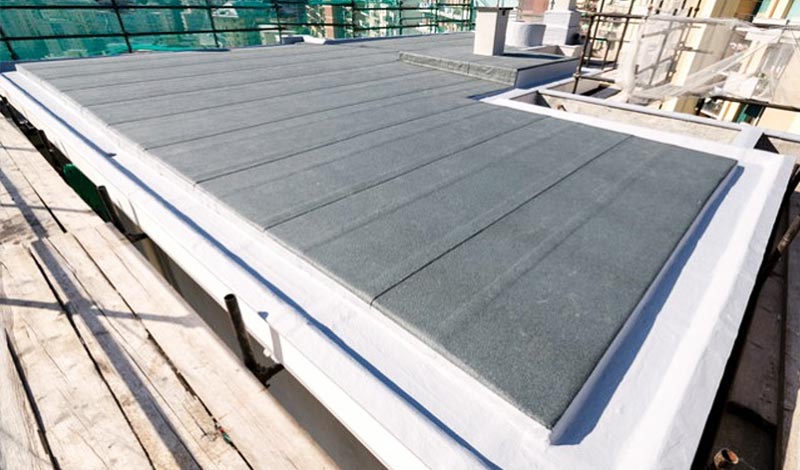A high-performance building starts at the top. Proper roof insulation is critical to heating and cooling system efficiency, as well as occupant comfort. R-value measures the thermal performance of insulation.
ASHRAE 90.1 Energy Standard for Buildings 2016 recommends minimum roof insulation values of R-25 for insulation entirely above deck and R-38 for attic insulation; some state codes may require higher levels. The insulation level that’s right for your project depends on the type of insulation, as well as climate and other factors.
Types of insulation
Fiberglass is one of the most common loose-fill insulation materials (R-values of 2.3 to 2.8 per inch) and is nonflammable. Other types of insulation include:
Cellulose (R-value of 3.7) is made from recycled paper products pulverized into fibers and chemically treated for fire, mold and pest resistance. Its dense structure also helps slow the spread of fire and increases the fire resistance performance by 22% to 55%.
Expanded polystyrene (EPS), with R-values of 4.1 to 4.5, is generally the most cost effective for tapered insulation and remains stable over its entire life. Thickness ranges from 2 to 10 inches andcosts less than other polymer insulation. EPS helps minimize roof drainage, leakage problems and ice damage to the membrane. Extruded polystyrene (R-value of 5) is similar, but more commonly used for roof systems where insulation is placed over the roof membrane.
Mineral wool (R-values of 3.7 to 4) has excellent thermal and long-term dimensional stability below the roofing membrane compared to foam plastics. It requires more thickness, which may be an issue for certain roofs or during re-roofing around existing doors and curbs. Although installation is quick and easy, an extra protection board may be required.
Polyisocyanurate (Polyiso), with R-values of 5 to 6, is a rigid insulation consisting of a plastic foam core sandwiched between two layers of paper and fiberglass. Polyiso is moisture resistant, has excellent dimensional stability and is typically made using recycled material. Its fire resistance meets the standard for Class 1 roofs. The Polyisocyanurate Insulation Manufacturers Association certification program requires an R-value of 5.7 for a Class 1 roof.
Installing roof insulation
The installation methods, components and design of the roof affects the R-value and overall performance. Insulation board joints and thermal bridging at mechanical fasteners reduce the R-value of the insulation layer.
A roof requiring R-20 insulation that incorporates daylighting systems covering 10% of the rooftop might require upgrading to R-25 insulation to compensate. Hybrid roof systems combine several types of insulation materials to provide a good balance of performance and economics.
To install a roof with a higher R-value than required by current standards, the Center for Environmental Innovation in Roofing recommends:
- Installing roof insulation in multiple, staggered layers
- Using non-thermal bridging techniques to attach the insulation
- Installing a durable cover board to minimize damage to the insulation
- Installing roof walkways to protect the insulation and direct roof traffic
It’s also important to consider the roof’s life cycle before selecting a design. Use roof commissioning as an assessment tool and plan for at least one major renovation of the roof. If moisture is controlled, many varieties of roof insulation boards may be reused or recycled.
